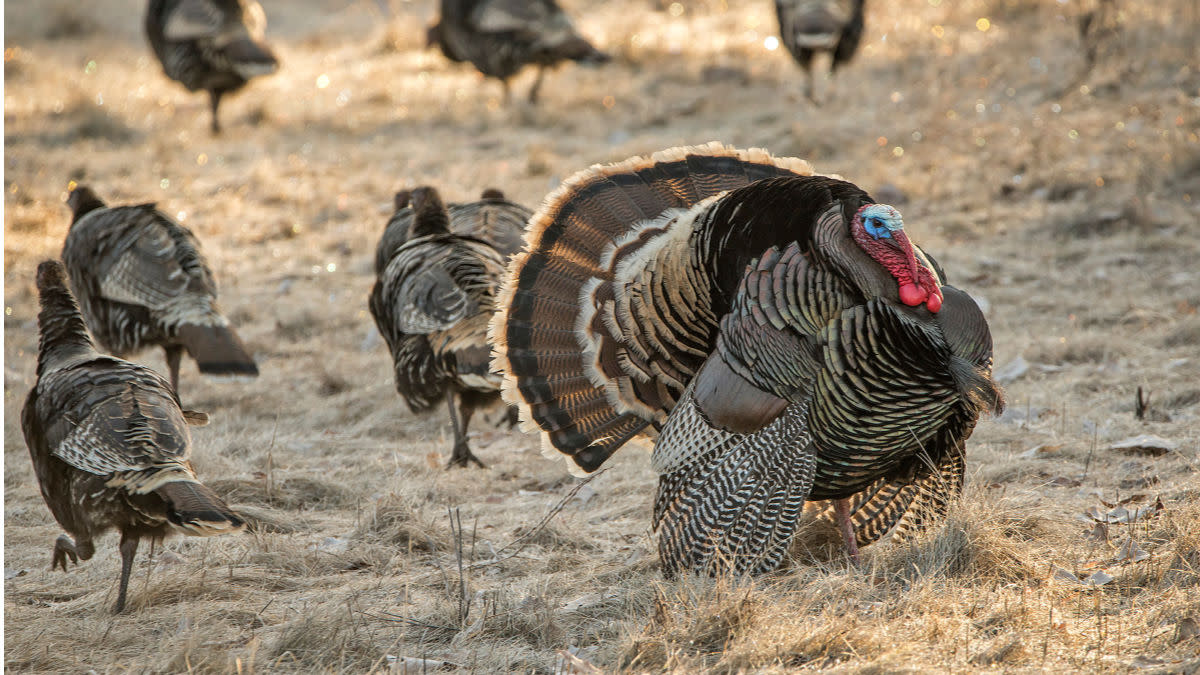
You could make a strong case that dedicated scouting has its place in the deer and elk woods but is overkill when it comes to spring turkeys. There’s some truth to this when it comes to late-season shotgun hunts in places with big flocks. When trolling turkeys are on the landscape, there isn’t much reason in trying to solve what birds are doing throughout the day.
But if you’re a bowhunter or hoping to kill one opening weekend, scouting is far more important. Depending on when opening day lands and what Mother Nature has in store, you might be hunting flocked-up birds, tight-lipped gobblers, or both. And in some Western states where turkeys are few and far between, it can take some looking just to find birds to chase. Or, you might just be dealing with hens that are far more concerned with the dining room than the bedroom.
The ladies will be on a food pattern in early to midseason, and that means the toms will be shadowing them throughout their daily travels. If this involves a picked cornfield and highly visible birds, your scouting will be pretty simple. But if they’re swinging through a field before heading into a swamp edge to scratch up insects or acorns, the task at hand is tougher.
Circling Turkeys
Bowhunting turkeys is a not-so-mobile pursuit that often necessitates sitting in one spot for hours, if not days. I’ve done it so much over the last decade that I’ve found myself flicking Skittles at my decoys or counting blades of grass to cope with the voluntary confinement.
Fluctuating sanity levels aside, what you learn from a dark-to-dark spring foray is that turkeys often work a circuit. From the roost they’ll usually head to fields in a fairly straight line, but as the day warms up, they often dip into cover to scratch around. If bugs are out, this is almost a given. Movements in cover might seem more random because they’re less visible, but there’s usually a pattern.
Knowing this means you can plan for where birds will be at various hours of the day, and it’ll allow you to pick a setup that has easy access and toms that are more callable.
What Sign Matters
Roost trees are an awesome starting point, and if you can identify one with generations of turkey droppings piled underneath, then you’re well on your way to a filled tag. In plenty of places you won’t find that 365-days-a-year roost, though. The birds will fly up in multiple spots depending on the wind direction, how much they got messed with throughout the day, and the whims of their tiny brains.
If you can hike beneath enough big oaks to find a couple chosen roosts, then by all means start there. But remember, it’s the daily food and travel routes that will probably make or break your hunt.
Walking the edges of fields and along logging roads is a good way to find tracks, feathers, and droppings, but locating those doesn’t equal a successful scouting mission. Try to piece together how the birds got there and how they left. Just like when you’re hunting a food source for deer, it isn’t good enough to just hang a stand over soybeans in any old tree. You want to be where the deer are going to walk into a field, and the same goes for turkeys.
Sometimes you can see this just by the tracks, but other times you’ll need to sit back and glass. While it feels a little like cheating, trail cameras can make this task almost too easy. Not only will you find out if turks are in the area, but you’ll also know their hourly movements. For bowhunters, camera intel can be a game changer.
Deep Cover Birds
My favorite turkey setups are in cover where birds will filter through to scratch throughout the day. Not only are you usually around smaller flocks, but it’s also easier to get a tom to commit in tight confines than in an open field where he can see 500 yards either direction.
Scouting turkeys in cover often resembles a shed hunt: walking through dense areas, staring at the ground. Turkey scratching is pretty obvious, and when you encounter a spot where birds are really working, then you know you’re into something good. Identifying a few areas that they’ll work through the day gives you options for all-day hunting, meaning you won’t have to post up on a field edge and cross your fingers. You can cater your blind choice, or your running and gunning strategy, to several spots that should have afternoon birds.
Scouting eliminates some of the randomness of turkey hunting and is a great way to put yourself around workable birds all day long—no matter your weapon of choice or calendar date.
Feature image via John Hafner.




